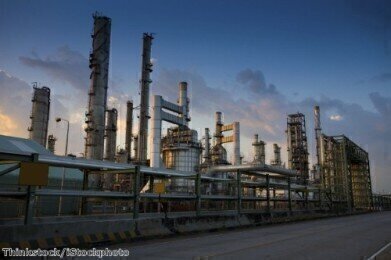Fuel for Thought
How Close is the Petrochemical Industry to Circularity?
Oct 18 2022
In 2022, the future of the petroleum industry remains highly uncertain as the sector comes to terms with its emissions. In this context, recycling has been suggested as one of the industry’s most promising mechanisms for the achievement of carbon neutrality. But how close are we, exactly?
At the tail-end of 2021, the creation of the world’s first certified circular polymer from recycled ocean-bound plastic was announced. At once, these recycled polyolefins address the need for alternative feedstocks and the problem of plastic pollution. It may seem, then, that we are approaching the true advent of the circular economy – but there’s a still a way to go.
Many firms are betting on the circular economy as a means of achieving carbon neutrality in all three scopes. For instance, France’s first chemical recycling plant for plastics will begin construction in 2023, whilst another plant for the manufacture of the bioplastic PLA is already under-construction – it is expected to be capable of an annual output of around 200,000 tons.
Similarly, some of Europe’s largest application-oriented research organisations have been investigating the chemical recycling of plastics and its industry applications. Of primary interest is the use of chemical methods to pick up the slack for mechanical recycling, which remains the most commercially-viable means of plastic recycling, as chemical recycling can handle materials, like contaminated plastic in homogenous mixes and composites, that currently confound mechanical processes. A number of pilot-scale projects have already been completed, including techniques for successfully recycling face-masks and extracting high-quality polystyrene from composite materials.
It's best not to get ahead of ourselves, however. For starters, even if certain research suggests high percentages for the possible recyclability of polymers, the industry only manages to recycle about 10% of plastics. Then, there are a number of difficulties in chemical recycling by the variability, in quality and composition, of plastics. For instance, in plants using pyrolysis, the quality of the oil which results from the recycling process becomes highly unpredictable. As such, further coordination between firms, their upstream partners and regulatory bodies must be established to reduce this variability, promoting recyclability as an essential capability of all plastics.
Similarly, recycled pyrolysis oil continues to be resistant to comprehensive analysis. Although some organisations are in the middle of developing the appropriate instrumentation, most of the industry is still saddled with technology and methods best suited to the analysis of fossil fuels. Administratively, the picture is almost a duplicate – most specifications still refer only to fossil fuels. Many are highly concerned with this regulatory deficiency, but there has been progress in the establishment of criteria.
Concerns have been raised about the pollutants that might result from pyrolytic plastic recycling, too, as the pyrolysis of halogenated compounds may produce dioxins, which are persistent organic pollutants. Indeed, the accumulation of such toxins over time might lower the theoretical recycling percentage of plastic.
Digital Edition
PIN 25.1 Feb/March
March 2024
In This Edition Safety - The technology behind the ION Science Tiger XT - Safety with ammonia and LOHCs as hydrogen carriers Analytical Instrumentation - Discussion on new tribology te...
View all digital editions
Events
Apr 24 2024 Mumbai, India
Apr 24 2024 Jakarta, Indonesia
Apr 28 2024 Montreal, Quebec, Canada
Apr 30 2024 Birmingham, UK
May 03 2024 Seoul, South Korea


















